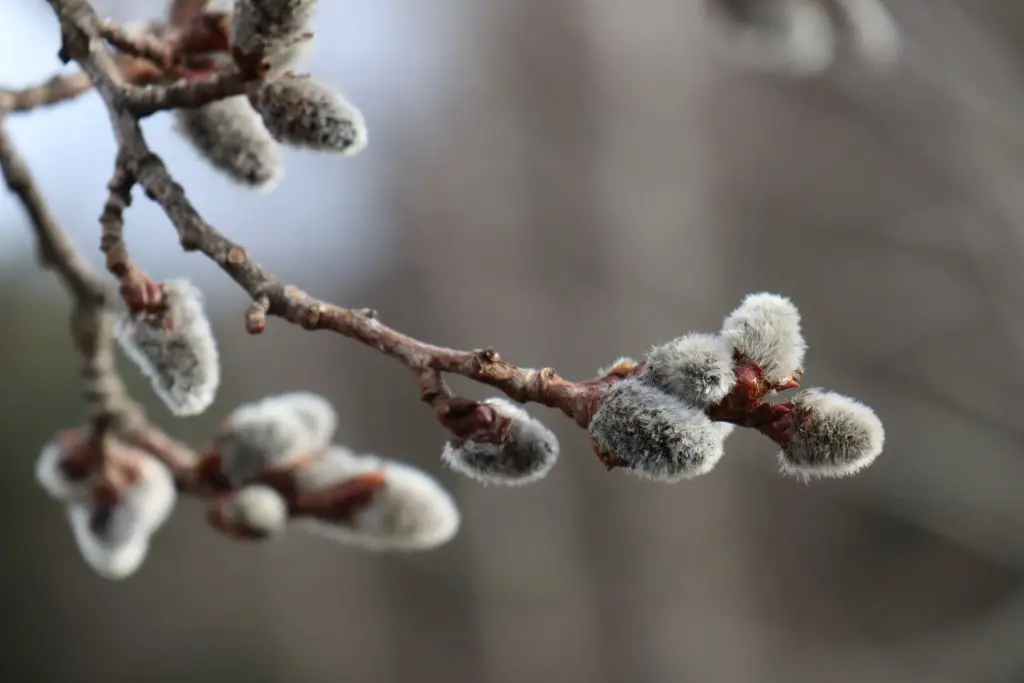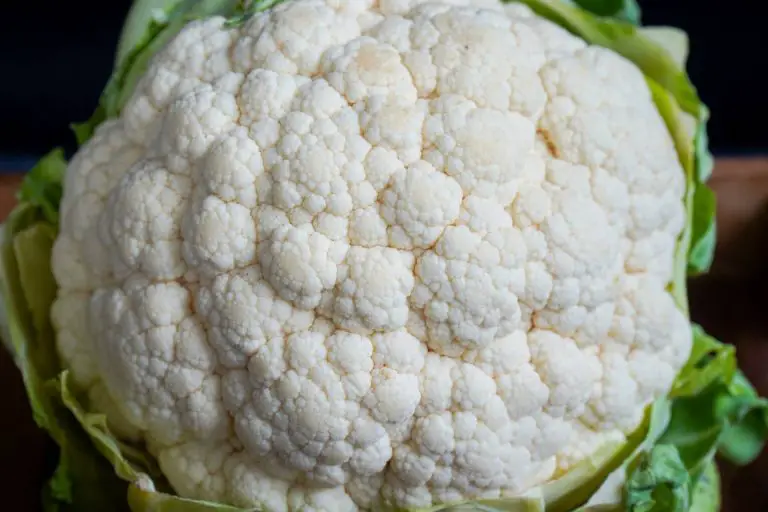How To Preserve Willow Branches [2022 Guide]
Are you wondering, How To Preserve Willow Branches? Here is a quick and easy guide to keeping your willow tree and branches happy and healthy!
Pussy willow, sometimes just known as willow, is a minor species of the Salix genus that grows fluffy catkins in early spring.
The most common species is Salix discolour, a deciduous shrub native to North America, while European species S. caprea and S. cinerea are also known as pussy willow.
The fluffy catkins of pussy willows are one of the first signs of spring. Although this shrub is usually seen in wild wetland habitats, it can be grown in your yard as long as you have the proper conditions for them to grow healthily.
DISCLAIMER
Some of the links on here are affiliate links and I may earn if you click on them, AT NO EXTRA cost to you. Hope you find the information here useful! Thanks.
Related Articles:
- 5 Best Hand Saw For Cutting Trees [2022 Guide]
- Collect Willow Branches With 11 Best Cordless Pruners
- Recoupe Willow Trimmings With Top 11 Best Hedge Shears
- Philodendron Brasil – Top 7 Simple Care Tips [2022 Guide]
- How To Dry Willow Branches The RIGHT Way [2022 Guide]
- 7 White Winter Plants For A Cheerful Winter![2023]
Pruning these plants properly helps you to show them off to their greatest potential in your garden. These prunes can then be preserved in spring flowers arrangements or as decoration.
Male pussy willow plants produce catkins earlier than female pussy willow trees because they are dioecious, making them more desirable.
Later in the spring, male catkins develop several little blooms filled with pollen, and the blossoms are no longer considered decorative for floral cuts. The catkins that female trees produce are smaller and less appealing than the blooms of the male trees.
Flies and bees pollinate female catkins, which develop flowers of their own. The oval leaves appear after the catkins.
Pussy willows are fast-growing plants that can reach a height of 25 feet and spread quickly. Placing a pussy willow branch in the soil for a few weeks will result in a fully formed adult plant. The best time to plant a pussy willow is in springtime, as this allows it to grow and bloom through summer.
How to Preserve Willow for Flower Arrangements
To preserve pulley willow for flower arrangements you must deprive them of water at just the right time. If you pick pussy willows and bring them inside and keep them in water for weeks, they may “go by”, that is to bloom out and lose their beauty.
To preserve pussy willows, simply cut some branches in the spring after the catkins have fully flowered. Bring them inside and put them in a vase that isn’t filled with water.
In early or late February, depending on where you live, you can bring branches with catkins that haven’t fully opened inside and force them to open. To do this you need to:
- Keep an eye out for swelling in the nodes along the branches of the willow. This is the first indication of the catkins coming up, the goal now is just to get to this stage faster. For this whole plan to work you should pick a day to do it where the temperature outside is above freezing, a harder task in some places than others depending on the time of year.
- Cut branches at a length of around 2 feet long. Cut as many branches as you’d like. Its best to use Anvil pruners as they are reliable, comfortable, light, and have sturdy handles made of forged aluminium with a lifetime guarantee.
- Put the branches in a bowl filled with lukewarm water, making sure you’re putting the branches in the bottom down. A bowl is easier to use right now as you need access to the bottom of the branches.
- While the bottom of the branches is submerged in the water, cut around 1 ich off of the bottom. This cut promotes water intake, as the air cannot act as a drying agent underwater. For even better final results, add a floral preservative to the water.
- Place the bottom of the branches and the warm water in a vase. Then, wrap the exposed areas of the branches (the top) in a damp cloth or other material like paper to preserve and generate humidity. Place this vase in a cool, dark spot for a day or two, or until the stems begins to show color
- Remove the cloth from the branches and place the vase in a cool spot in indirect sunlight. The temperature of this area should be around 60-65 degrees Fahrenheit to achieve the best results.
- Occasionally mist the branches until the pussy willows appear.
- Once you have the branches to your desired look, completely dry them out, and they will be ready for your decoration or dried flower arrrangemets. To preserve a tree branch, you can simply spray them with a polyurethane varnish or other preservative spray and let them sit overnight to completely dry.
Also, here are the trusty anvil pruners I mentioned just now.

What Conditions Do Pussy Willows Need To Grow?
Knowing how to preserve them is one thing, but to even get t this stage you need to know how to grow a pussy willow if you want to use branches from your backyard.

Pussy willow trees are wetland plants in the wild. Because they require a lot of water, they’re ideal for sections of your yard that don’t drain properly. Make sure to keep these trees away from septic tank fields, sewage lines, and water lines since their roots are invasive.
Pussy willows can be pruned to keep them compact and shrub-like. In the spring, they can be used as lawn specimens, and in the summer, they can be used as privacy screens or borders.
A pussy willow will control the tree’s development and let you mold it. When the catkins are starting to fade is the best time to prune.
Some individuals may aggressively prune the bush until it is just 12 inches tall. Coppice pruning is the term used to describe this process. Coppice trimming is frequently carried out to encourage tall, straight branches with an abundance of catkins.
Deer, squirrels, and birds eat the branches of pussy willows. If you don’t want your pussy willows to be destroyed, use chicken wire or another type of fence to protect them.
Other Conditions For How To Preserve Willow Branches
Light
Pussy willows do best in full sunlight, but they can tolerate shade.
Soil
This tree likes moist and rich soil as it needs to be kept wet to grow properly. It will be able to handle poorly drained soil, but the best soil to use is one that can drain well. Pussy willows also prefer alkaline soil.
Temperature
Pussy willows thrive in regions with moderate climates and cold winters, such as the Northern United States and Canada. In warmer climates, they develop more slowly.
Water
As explained, pussy willows love water. In the wild, they can usually be found growing on the banks of streams or sewer lines, and are useful for controlling soil erosion in these areas.
To grow them at home, you need to make sure that they have plenty of water and are not subjected to drought conditions. If you do live in a drier area of the country, you should water them heavily once or twice a week if there is no rainfall. Remember, their soil should always be wet or very damp.
Fertilizer
Pussy willows grow well when fed with simple compost or leaf mould. If you want to fertilize it though then you should do this in the fall with a balanced fertilizer, and only after the plant is more than one year old.
The best method of using fertilizer is to use 1/2 pound fertilizer for every 1/2 inch of base-truck diameter, spread 18 inches beyond the drip line of the branches. Make sure that you do not let the fertilizer come into direct contact with the truck of the pussy willow.
Here is an organic fertiliser that focuses specifically on growing strong, lush, healthy trees and shrubs!

FAQs
What Are The Types Of Pussy Willow?
Pussy willows refer to three distinct Salix species;
- Salix discolor
- Salix caprea
- Salix cinerea
Salix discolor (American Pussy Willow)

The northern regions of the United States and Canada are where you may find the American pussy willow most frequently. However, it may be cultivated all throughout the US.
A reddish bud is produced by Salix discolor, and it gradually turns into a silvery-white catkin with hair.
The catkin will either become yellow as a male bloom or stay white and fluffy as a female blossom when it starts to bud.
In locations with a warmer environment, plants frequently do not grow much taller than 8 feet.
Salix may grow up to 20 feet tall and 12 feet broad since it prefers full sun.
The most aggressive grower and producer of the longest, furry catkins, up to 212 inches long, is the gigantic pussy willow, Salix chaenomeloides.
Salix Caprea (Goat Willow)

The goat willow, Salix caprea, produces white catkins before it blooms. Compared to American pussy willow, the catkins are a little bigger.
Goat willow catkins develop into considerably bigger blossoms with long, tendril-like petals as they become older.
Thanks to their pollen, male flowers have a vivid yellow color. Female flowers often have a greenish hue.
Rarely does this little tree reach heights of more than 33 feet. In actuality, it resembles a dwarf habit more. It is not as little as Salix discolor, but in colder regions, it may grow into a lovely ornamental tree.
Another variety, the Salix caprea pendula, also known as the weeping pussy willow, is the variation that spreads out like a ground cover as opposed to growing upward.
Salix Cinerea (Grey Willow)

Salix cinerea, the biggest variety, has willow stalk stands that are up to 18 feet tall on average. It may mature to a height of up to 49 feet, making it the tallest tree.
Salix cinerea has a tendency to cluster its catkin distribution near the extremities of branches.
Leaf buds develop along the branches and large leaves develop around the one blossom that they typically have.
Due to pollen dispersion, the male blooms have similarly a deep golden color. The color of female blooms is greenish-grey. When they reach maturity, they generate wind-borne seeds.
Growing Pussy Willow From Seeds
If you have been wondering how to grow pussy willows from seeds, it is relatively simple.
By gathering the seeds from the catkins at the time when they seem the most cottony, it is quite simple to develop the plants from seeds. With the silky seed hairs still attached, put the seeds right away in a little container on top of the potting soil.
Until the seeds sprout and mature into healthy seedlings, keep the soil moist. At that point, the new growth may be transferred into a dry spot.
Potential Problems With Pussy Willow
Even in seemingly adverse growth situations, pussy willows are a tough plant. Nevertheless, there are a couple of issues to be aware of when cultivating these plants.
Fertilizer Issues
A typical and simple to treat phosphorus shortage indication is a severely yellowed leaf with charred edges. Add more nutrients to the soil if you notice indicators of nutrient deficit and haven’t been fertilizing.
nitrogen is needed to encourage plant development while trying to produce longer stalks. In order to promote early growth and grow long stalks for harvest, you need to feed more nitrogen in the fall.
The often-fragile branches are susceptible to cracking and breaking in the late winter as a result of the weight of snow and ice. Sweep the thick accumulation of snow off your pussy willows to prevent dead branches surrounding your plant.
Watch out for powdery mildew or leaf spots when you are caring for the plant.
Pussy willows may thrive with only compost or leaf mold as a fertilizer. After the plant has grown for more than a year, you may fertilize it once in the fall using a balanced fertilizer.
Pest Damages
Pests such as scale insects and aphids can impose as a problem for pussy willows.
Caterpillars are both helpful and destructive as they pussy willows to be a nice habitat. While you could see a lot of butterfly pupae hanging from the trees, you might also see a lot of moth larvae nibbling away.
Takeaway
Pussy willow branches make a wonderful decoration for your home, as well as being included in dried flower arrangements.
Keep the willows so you may use them in centerpieces with dried flowers. Once the catkins have emerged, just cut them and place them in a dry vase.
They can add a rustic touch to any room and no, you do not have to be a master gardener to take care of this good plant.
Once they have been dried and preserved properly they will often last for weeks if not months, so you won’t have to worry about replacing this decoration for a very long time.
Well, there you have it, all the answers to your question, How To Preserve Willow Branches? Hopefully, that helped but if you want more info, we found you a video below!



![How Often To Water Ferns Outside [+Growing Tips!]](https://aboveandbeyondgardening.com/wp-content/uploads/2021/10/How-Often-To-Water-Ferns-Outside-768x512.jpg)

![15 Companion Plants For Cantaloupe & What To Avoid! [2023]](https://aboveandbeyondgardening.com/wp-content/uploads/2022/11/companion-plants-for-cantaloupe-2-768x512.jpg)

